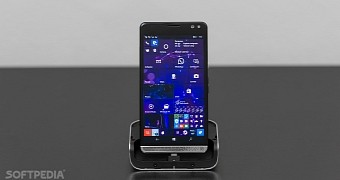Everyone’s hoping that Microsoft is building a Surface Phone, and an announcement that was made at WinHEC today is pretty much the first big sign that the company is indeed heading into this direction.
Microsoft and Qualcomm announced that they’re bringing full Windows 10 on ARM processors, making it possible to run desktop applications on a mobile device, a thing that the software giant has been looking into for quite some time now.
And to prove its point, Microsoft has also presented a demo of the full version of Windows 10 running on a Snapdragon 820 processor, showing that this chip has what it takes to run a very demanding software solution like Adobe’s Photoshop without any hiccups.
For what it’s worth, the Snapdragon 820 is already installed on devices powered by Windows 10 Mobile, including the HP Elite X3 (which is quite a workhorse) and the Alcatel IDOL 4S, but it’s not yet clear if Microsoft’s goal is to make it possible to run the full version of Windows 10 on these phones as well.
Desktop apps limited to Continuum
Qualcomm said its next generation of processors would fully support Windows 10, so the plan is most likely to allow only new devices to do it and avoid any technical issues that might arise on older models.
It goes without saying that buyers of the HP Elite X3 and the Alcatel would absolutely love to get this feature, but there are certainly challenges that need to be dealt with before making this happen.
Microsoft and Qualcomm guarantee that bringing full Windows 10 on mobile processors won’t have an impact on performance and battery life, but this is mostly because desktop software emulation might be limited to Continuum mode.
Previous reports indicated that the Surface Phone could see daylight in the fall of 2017, so Microsoft and Qualcomm still have plenty of time to refine desktop app support on a Snapdragon chip before starting production. There still are many questions to be answered, but hopefully Microsoft would provide more information on this in the coming months.

 14 DAY TRIAL //
14 DAY TRIAL // 